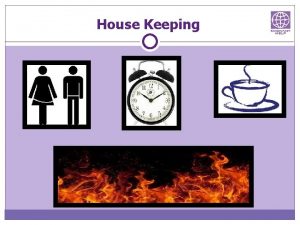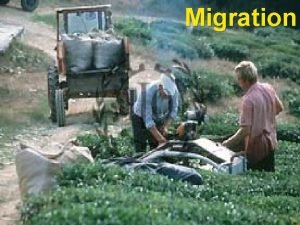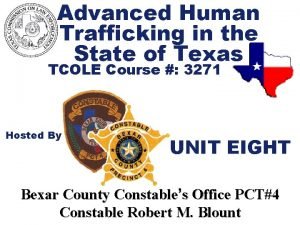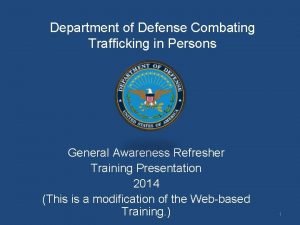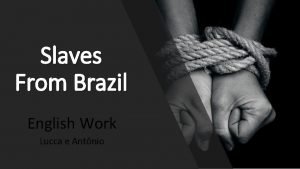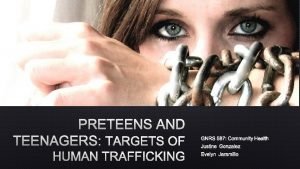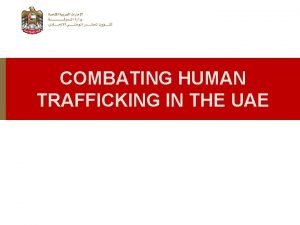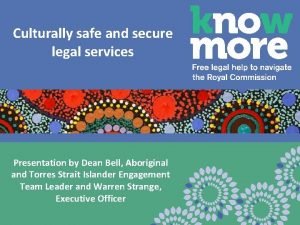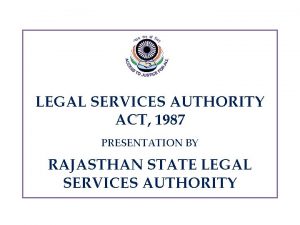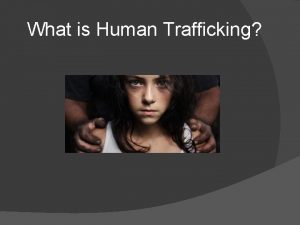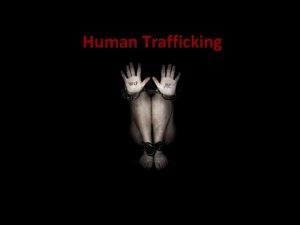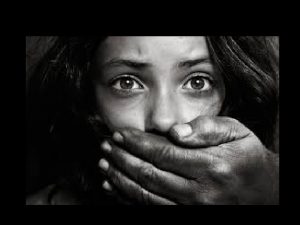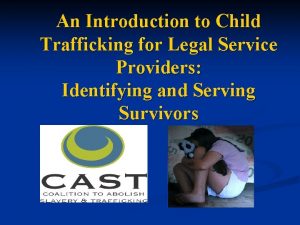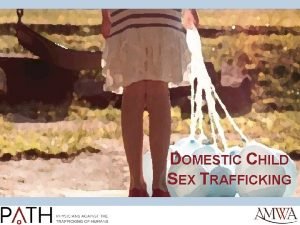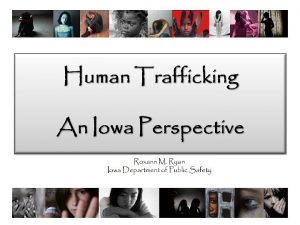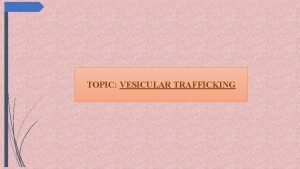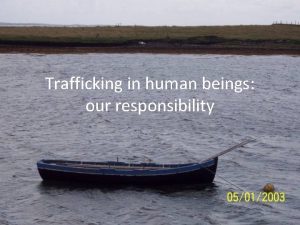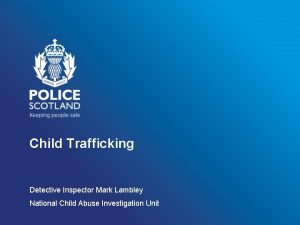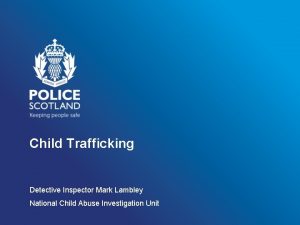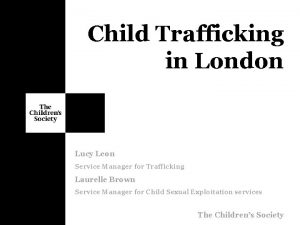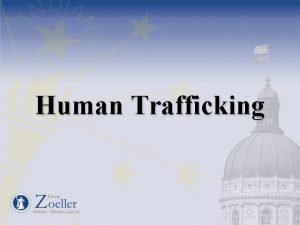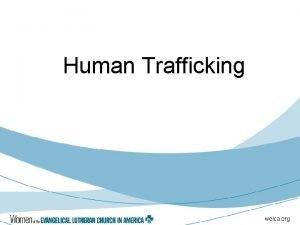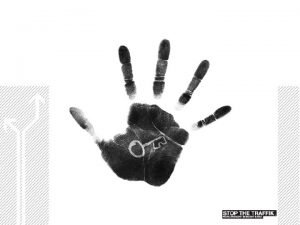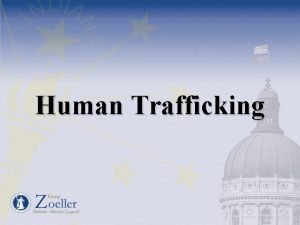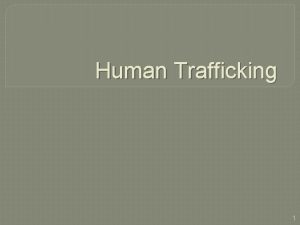An Introduction to Child Trafficking for Legal Service












































































- Slides: 76

An Introduction to Child Trafficking for Legal Service Providers: Identifying and Serving Survivors

Coalition to Abolish Slavery & Trafficking § § § El Monte Sweatshop Workers, 1995 LA Times Stephanie Richard, Managing Attorney(213) 365 -1906 ext. 115 Stephanie@castla. org www. castla. org Founded in 1998 in response to El Monte Sweatshop. Mission: to assist persons trafficked for the purpose of forced labor and slavery-like practices and to work toward ending all instances of such human rights violations.

CAST Services for Trafficking Survivors § Housing/Basic Necessities: emergency/transitional housing, affordable housing, tenants’ rights education, utilities info, food, clothing. § Medical: immediate screening for injury/illness, documentation of injuries/scars, nutrition assessment, follow-up health care, vaccinations/TB/STD/HIV tests, chronic illness care, OB/GYN, dental, vision. § Education/Employment: literacy, ESL/GED/vocational training, labor law education, career planning, job search. § Life Skills: cross-cultural education, transportation, signage, training to prevent exploitation, banking, financial budgeting. § Legal Services: Immigration relief, victims-witness advocacy, civil case referrals, Long-term, comprehensive support for continuing legal needs.

Training Overview 1. Identifying and Serving Child Trafficking Survivors 2. Understanding the Legal Framework A. B. C. Immigration Criminal Framework n Victim-Witness Advocacy Civil Remedies

Dimensions of Child Trafficking Adapted from: CAST Presentation © Freedom Network 2003 Photos by J. Maillard, International Labour Organization

Human Trafficking is a Modern Day Form of Slavery n Victims trafficked for: n Forced labor: Examples: restaurant work, agricultural work, domestic work, factory work, or illegal enterprises such as selling drugs and serving as decoys in smuggling cases. n Sexual exploitation: Examples: prostitution, use in pornography n Child Trafficking: n ‘The recruitment, transportation, transfer, harboring or receipt of a child for the purpose of exploitation constitutes ‘trafficking in persons’ -Protocol to Prevent, Suppress and Punish Trafficking in Persons, Especially Women and Children, Supplementing the United Nations Convention Against Transnational Organized Crime, (“Protocol”), G. A. res. 55/25, annex II, 55 U. N. GAOR Supp. (No. 49) at 60, U. N. Doc. A/45/49 (Vol. I) (2001), Art. 3(c).

Human Trafficking is an Under Identified Crime n Many people think of human trafficking as only an international problem n Victims tend not to self-identify as trafficking victims n Often victims are deported before their full story is known

Some Estimates as to the Scope of the Problem: n In the U. S. 14, 500 -17, 500 men, women and children trafficked annually n As many as 10, 000 people in slavery like conditions in the Los Angeles area alone n 2 million people trafficked worldwide annually n 27 million people in slavery around the world n $9 billion dollar business (United States Department of State, Trafficking in Persons Report, (TIP), June 2007)

Numbers of Child Trafficking: n The estimates on the number of immigrant children being trafficked into the country annually range from 7, 000 to 17, 000. [1] n An exact estimate is difficult to obtain given the scarcity of objective data AND the common practice of including women and children into one category. n In a study on child sexual exploitation in the U. S. , Los Angeles was acknowledged as a major point of entry and departure for trafficked immigrant children. [2] However: n The analysis did not uncover any estimates on the number of alien minors being trafficked into the Los Angeles area. n The literature does not present much information on the nature and extent to which alien minors are being trafficked in LAC, though there are some circumstantial evidence that should be considered. [1] Estes and Weiner, p. 114. [2] Id.

Percentage of Child Trafficking Victims Around the World: • CAST’s caseload for 2007 -2008 addressed ~4% child victims of human trafficking. • US Government average is about 13% of cases identified From http: //www. gao. gov/new. items/d 06825. pdf at pg 12

Illustrating the need to identify and serve children victims n From 2001 -2007, only 131 child victims have been certified by the Federal government. n Only 3 cases have been confirmed to be from the Los Angeles area prior to 2006. n There is a great discrepancy between the estimates of alien minors trafficked into the U. S. annually and the actual cases identified. (http: //www. usdoj. gov/ag/annualreports/tr 2007/agreporthumantrafficing 2007. pdf, 4)

The Problem of Misidentification n Children who have been trafficked are regularly misidentified by authorities and by service agencies. Why: n Lack of systematic monitoring and reporting by agencies that work with at-risk youth. n Once they are misidentified they are not given the special protection measures to which they are entitled. What we need: n A collaborative effort between the community, law enforcement, and human services agencies.

Describing the Problem: National Statistics Source: USCCB n Majority referred by law enforcement & government officials n Need organizations that work with children to be able to better identify the issue

Describing the Problem: National Statistics Type of Exploitation Source: USCCB Country of origin

Survivor Stories n Lily, a young Egyptian girl was freed from a couple’s home in Irvine, California, where she was forced to work as a domestic servant for two years. She was denied access to a formal education and was threatened with physical harm by the couple. [1] n At age 15, Sofia was promised a job as a waitress in America. She was told that she would make enough money to pay off her smuggling debts in no time. Her prospects at home seemed dim, so along with her older sister, she agreed to go to California. When they arrived, they were forced into a prostitution ring run by human traffickers. [2] n Jeffery, 16, was brought over to the U. S. by a family. He was told that he had to work for them at their store to pay off his travel debt. He worked eight hours a day, six days a week. He did not attend school. Eventually, the family told him to leave. [3] n Brandon, 17, from a Central American country was forced to sell drugs in the United States. He was eventually charged with drug trafficking in juvenile court. The Juvenile Justice System eventually found Brandon guilty of selling drugs. [4] [1] U. S. Department of Justice, Press Release, February 2, 2005, “Irvine couple indicted on involuntary servitude charges for holding girl as virtual slave to serve their family, ” http: //losangeles. fbi. gov/dojpressrel/pressrel 05/ibrahimabdel 020205. htm (accessed on March 22, 2006). [2] This is a case study based on several interviews. The names, places, and dates have been changed to ensure the child’s confidentiality is strictly maintained.

Across the U. S. n Plainfield, NJ: Four teenage girls, ages range from 14 to 18, were lured from their homes in Mexico by two Mexican nationals and forced to work in a brothel. [1] n Austin, TX: In 2003, two individuals were convicted for sex trafficking of children, along with other related crimes, for recruiting, smuggling, and forcing young girls from Mexico into prostitution. [2] n Silver Spring, MD: A Maryland couple was convicted for enslaving a young Cameroonian girl as a domestic servant for a 3 -year period, during which time she was physically and sexually abused. [3] [1] U. S. Department of Justice. August 7, 2003. ““Madams" Sentenced to 210 Months in Prison for Forcing Mexican Teens into Prostitution in N. J. ” Press Release. http: //www. usdoj. gov/usao/nj/publicaffairs/NJ_Press/files/ji 0807_r. htm (accessed on April 22, 2006). Release. http: //www. usdoj. gov/usao/nj/publicaffairs/NJ_Press/files/ji 0807_r. htm [2] U. S. Department of Justice. December 19, 2003. “Mexican Nationals Operating a Brothel Sentenced for Human Trafficking. ” Press Release from U. S. Attorney’s Office Western District of Texas. http: //www. usdoj. gov/usao/txw/press_releases/2003/austin_human_trafficking. sen. pdf (accessed on April 22, 2006). [3] U. S. Department of Justice. December 20, 2001. “Maryland Couple Convicted of Enslaving Teenage Cameroonian Girl in their Home. ” Press Release. http: //www. usdoj. gov/opa/pr/2001/December/01_crt_661. htm (accessed on April 22, 2006).

Identifying Survivors of Child Trafficking Adapted from: CAST Presentation © Freedom Network 2003 Photos by J. Maillard, International Labour Organization

Human Trafficking Defined The term ''severe forms of trafficking in persons'' means: n (A) sex trafficking in which a commercial sex act is induced by force, fraud, or coercion, OR in which the person induced to perform such act has not attained 18 years of age; or n (B) the recruitment, harboring, transportation, provision, or obtaining of a person for labor or services, through the use of force, fraud, or coercion for the purpose of subjection to involuntary servitude, peonage, debt bondage, or slavery. (Victims of Trafficking and Violence Prevention Act of 2000 can be found at www. ojp. usdoj. gov/vawo/laws/vawo 2000/)

Three Elements of Trafficking ACTS 1 Recruiting OR Harboring OR Moving OR Obtaining MEANS 2 END 3 For the purposes of by Force OR Fraud OR Coercion a person, © Coalition to Abolish Slavery & Trafficking (CAST), 2006. All Rights Reserved. Involuntary Servitude OR Debt Bondage OR Slavery OR Sex Trade

Common Misconceptions n Trafficking requires the crossing of national or international borders n Trafficking only involves foreign nationals, not US citizens n You can consent to being trafficked

The U. S. Side of Human Trafficking n An unknown number of American citizens and legal residents are trafficked within the country. n Forced to work in sexual servitude and forced labor. n FBI debriefings of sex traffickers or pimps indicate that approx. 20 -40% of the victims forced or recruited into prostitution were juveniles. n Source: Chris Swecker, FBI

Local Resources To help access services/benefits: Ann Lane at Office of Refugee Resettlement : 1 -202 -401 -4732 Ann. lane@acf. hhs. gov n Service Providers who specialize in assisting US Citizen or LPR survivors: n n n Covenant House, Los Angeles 323 461 -3131 Children of the Night, Los Angeles 818 908 -4474 The SAGE Project, Inc. , San Francisco 415 905 -5050 National Human Trafficking Resource Center (NHTRC) 1 -888 -3737888 If the child would like to seek criminal charges: Trafficking in Persons and Worker Exploitation Task Force Complaint Line 1 -888 -428 -7581

Trafficking versus Smuggling SMUGGLING: TRAFFICKING: n n n Contains the elements of force, fraud, or coercion (cannot consent to enslavement) n No force, fraud, or coercion n Unauthorized crossing of borders n Those smuggled are seen as criminals by the law Subsequent exploitation and/or forced labor Those trafficked are seen as victims by the law

What Constitutes Coercion? 22 U. S. C. § 7102 Coercion. The term "coercion" means-- (A) threats of serious harm to or physical restraint against any person; (B) any scheme, plan, or pattern intended to cause a person to believe that failure to perform an act would result in serious harm to or physical restraint against any person; or (C) the abuse or threatened abuse of the legal process.

Modern-Day Slavery: A Prison Without Walls Along with: Physical / Psychological / Sexual abuse/ Physical threats Look for: n Long hours n Little/No pay n Withholding documents n Threats of deportation n Threats to family members in home country n Isolation n Inhumane Living Conditions n Denial of access to healthcare services n Having to work when sick n Not able to refuse customer requests © Coalition to Abolish Slavery & Trafficking (CAST), 2006. All Rights Reserved.

Things to Look for Especially in Juvenile Cases Substance abuse n Denial of access to education n Denial of recreational activities n No peers/contact with others from outside world n Already in the Juvenile Justice System n False documents with incorrect age n

Key Identification Questions Recruitment/ Migration: n Why did you come to the U. S. ? n Who arranged your travel? n How did you get here? n Do you owe money for your trip? n What did you expect when you came? n What did you end up doing? n Were you scared? Identification: n Do you have any papers? n Who has them? Living Environment: n Where do you live? n Who else lives there? n Where do you sleep? n Are you scared to leave? Coercion: n Has anybody ever threatened you to keep you from running away? n Has anybody ever hurt you to make you stay? n Has you family been threatened? Working Conditions: n Are you in school? n Are you working? n What kind of work do you do? n Are you paid? n Do you owe money to your boss or someone else? n Can you leave your job if you want?

Initial Contact With Potentially Trafficked Persons n Victims might often lie about their present circumstances AND are unlikely to self-identify as trafficking victims. n Establish that you: n n n Always use an interpreter even if some English is spoken n n n Have no power to order the person deported Do not work for the government or police Will not take any action without the client’s consent Represent their interests and no one else Ask if there is a gender preference Be sure to build trust Be careful not to impose values or ideas Be knowledgeable and aware of your position of power in society Find out if other victims are being held Be suspicious of private attorneys paid for by trafficker

Talking to Children: n Limit the attorney to child ratio. n Use only FLUENT interpreters. n Sit next to, not across from the child. n Ask open-ended, not leading questions. n Let the child tell their story. Don’t interrupt, don’t finish their sentences, etc. n Tolerate pauses, even if they are long. n Be conscious of male/female dynamics & cultural differences, ie. eye contact. Be aware that abuse, trauma, and sexual assault may impact behavior and memory of trafficked minors. n

Redefine how you look at cases n For example: DCFS defines exploitation as “any unethical use of [children] for one’s own advantage or profit. ” See Los Angeles County Department of Children and Family Services (DCFS). “Assessment of Exploitation. ” n According to the Los Angeles County Department of Children and Family Services (DCFS) 100 child exploitation referrals were made in 2007

Understanding the Legal Framework Adapted from: CAST Presentation © Freedom Network 2003 Photos by J. Maillard, International Labour Organization

Trafficking Victims Protection Act of 2000 (TVPA) Under the TVPA Victims Of Human Trafficking are entitled to: Safety n Privacy n Information n Legal representation n Be heard in court n Medical assistance n Compensation for damages n Social assistance n Seek residence n Return n

What Are The Options For Relief And Recovery? n Repatriation n Immigration n Criminal Prosecution n Civil Law Remedies

Family Reunification? n Family reunification should be explored as a priority n Ensure n claimants are genuine family members n do not have connection to the traffickers n capable of providing safety for the child n Develop a plan for identifying, assessing, and communicating with family in long-term care plans.

Repatriation for Children “Return to the country of origin…shall in principle only be arranged if such return is in the best interests of the child. ” [1] Paragraph 84 of Convention on the Rights of the Child General Comment No. 6

In assisting unaccompanied minors return to their home country or a third country, the following must be ensured: n The best interest of the child has to be the paramount consideration for all parties during the whole process (pursuant to the Convention on the Rights of the Child, and usually specified in the national laws or policy/practice of the referring country); n Participation and the right of the child to express his or her views freely; n The consent of the parent or legal guardian; n Tracing of the family (so long as family tracing does not jeopardize the best interests of the child or the rights of the family members being traced); n Sufficient information and counseling of the child and/or the guardian; n Family assessment to determine the availability of family support (consent and ability of the family to care for the child) or an appropriate care provider as well as reintegration mechanisms in the receiving country; n Depending on the laws in the referring country, the child should come under the protection of the social service institutions acting in loco parentis. Where this is so, permission must be sought from the agency concerned before the minor is removed from the country; n Where there is suspicion of family-related trafficking, it is important that all due consideration be given to such an eventuality, and that a family assessment is made to clarify if family involvement was a factor in the trafficking process. IOM Direct Assistance for Victims of Trafficking Handbook at 78 -79.

Repatriation Assistance § For assistance arranging travel, purchasing air tickets, and child accompaniment contact: § § § IOM Washington Carson Osberg 1752 N Street NW Suite 700, Washington, DC 20036 E-mail: Cosberg@iom. int Phone: 202 862 1826 ext. 227 Fax: 202 862 1879 § Link with NGO in country of repatriation to assess family situation, safety, available services, accompany client through immigration, etc. § Follow-up with client as appropriate

Immigration Status n Provided by the TVPA n Forms of Relief specific for Human Trafficking Victims: n Temporary relief through Continued Presence n Possibility to adjust status to become a legal permanent resident through T-Visa or U-Visa.

What Is Continued Presence? n Provides temporary immigration relief to potential witnesses who are victims of severe forms of trafficking Work authorization n Good for 1 year but can be extended n Federal benefits for 8 months n n Only Federal law enforcement agents can request continued presence n Since children do not have to cooperate with law enforcement-weigh risks and benefits prior to seeking this form of relief

What Is A T-Visa? n Enables certain victims of human trafficking to live and work in U. S. for four years n Children can petition to bring parents and unmarried siblings under the age of 21 to the U. S. n Can receive government benefits, including cash assistance for 8 months n Can apply for Green Card after three years

Who Is Eligible For A T-Visa? ELEMENTS: n Is or has been a victim of severe form of trafficking in persons n Is physically present in U. S. on account of such trafficking n Has complied with reasonable request for assistance in the investigation or prosecution of acts of trafficking n Children under 18 do not need to meet this criterion n Would suffer extreme hardship involving unusual and severe harm upon removal from U. S.

What Is Certification? § Victims of a severe form of trafficking who have been certified by the Department of Health and Human Services (HHS) are eligible for benefits to the same extent as refugees such as: § Federal and state public assistance benefits, such as Refugee Cash and Medical Assistance, Temporary Assistance for Needy Families (TANF), Medicaid, Supplemental Security Income (SSI), and Food Stamps § Refugee self-sufficiency Matching Grant Program and other ORR discretionary grant programs and ORR discretionary grant benefits programs for victims of trafficking

Who Is Eligible For Certification? Individual must be determined to be a victim of a severe form of trafficking by a federal law enforcement agency OR n Have filed and had a T-visa application approved n Note: In the case of minors ORR must verify the trafficking status before a letter of eligibility can be issued.

Access to CA State Benefits n SB 1569 provides temporary and immediate access to social services for victims of human trafficking, domestic violence and other violent crimes prior to federal certification

SB 1569 Eligibility n A Victim of human trafficking who n Is taking steps to file an application for T-Non immigration status visa (TVisa) OR n Has applied for a T-visa or U-visa

What are the benefits? § § § Refugee Cash Assistance (may be limited to 8 months state funded services, eligibility begins from date of the application for the benefits ) Refugee Social Services (available for 60 months from the date of application for benefits) Food Stamps (8 months) CALWORKs (limited to a five-year period for adults. Aid begins the date of application) Cash Assistance Program for Immigrants (CAPI) Medi-CAL (8 months)

Establishing Eligibility n n Provide a sworn statement; and One additional supporting document is required n n n n Police, government agency, or court records or files News articles Documentation from the social services, trafficking or domestic violence program, or a legal, clinical, medical, or other professional from whom the applicant or recipient has sought assistance in dealing with the crime A statement from any other individual with knowledge of the circumstances that provided the basis for the claim Physical evidence A copy of a completed visa application Written notice from the federal agency of receipt of the visa application

Eligibility Cont’d Documentation to show that a T-visa has been or will be filed: n n A receipt from U. S. Citizenship and Immigration Services (USCIS) that verifies an applicant has filed A copy of the application for T-Visa Statement from officials such as law enforcement Statement from a victim advocate who has assisted or is assisting the victim with the T-Visa application

Other Forms of Immigration Relief n U Visa For victims of certain criminal activity who suffered substantial physical or mental abuse n Asylum For persons who have suffered or fear persecution based on race, religion, nationality, political opinion or membership in a particular social group in country of origin n Special Immigrant Juvenile Status Children eligible for long-term foster care due to abuse, neglect or abandonment when return to home country not a viable option n Violence Against Women Act Allows certain battered immigrants to file for immigration relief without abuser’s assistance or knowledge

U-Visa Requirements n Be a victim of an enumerated crime that occurred in the United States or its territories n rape; torture; trafficking; incest; domestic violence; sexual assault; abusive sexual contact; prostitution; sexual exploitation; female genital mutilation; being held hostage; peonage; involuntary servitude; slave trade; kidnapping; abduction; unlawful criminal restraint; false imprisonment; blackmail; extortion; manslaughter; murder; felonious assault; witness tampering; obstruction of justice; perjury; or attempt, conspiracy, or solicitation to commit any of these crimes n Suffered substantial physical or mental abuse as a result of being a victim of the crime n Possess information concerning this criminal activity n Is being, or is likely to be helpful in the investigation or prosecution. n Law Enforcement Certification is Required to Apply

U- Visa Child Specific Requirements n If the applicant is a child under age 16 , the If the applicant is a parent, guardian or next friend of the applicant possesses information concerning this criminal activity n If the applicant is a child under age 16 , the If the applicant is a parent, guardian, or next friend has been, is being, or is likely to be helpful in the being, or is likely to be investigation or prosecution.

Asylum: Fear persecution from the government or a group that it is unwilling or unable to control, based on the person’s race, religion, political opinion, nationality, or social group.

Asylum-Child Specific n The 1998 INS Guidelines for Children’s Asylum Claims state that the same standards apply to both adults and children seeking asylum n INS Child Asylum Guidelines and regulations do allow for a few differences n “the harm a child fears or has suffered, however, may be relatively less than that of an adult to still qualify as persecution. ” n child may be accessed differently than an adult when making the determination if there is a well-founded fear of persecution n n For example: Adjudicator is permitted to give more weight to objective factors because of children’s oftentimes inability to conceive of or articulate subjective apprehension. Children are exempt from the strict one year filing deadline for asylum applications. See 8 U. S. C. 1158(a)(2)(B); 8 C. F. R. 208. 4(a)(5)(iv)

Special Immigrant Juvenile Status (SIJS) Requirements n Declared dependent in a juvenile court or placed in the care of a child welfare n Eligible for long-term foster care due to abuse, neglect or abandonment; and n not in the child’s best interest to be returned to his or her home country agency; n Must be under 21 and not married *** Sometimes the best option for children because a child can petition concurrently for Green Card n For additional Information: ILRC manual of SIJS available at http: //www. ilrc. org/resources/sijs_manual_2005_complete. php

Violence Against Women Act (VAWA) Spouses and children of United States citizens or lawful permanent residents may either: n Self-petition to obtain lawful permanent residency OR n Seek cancellation of removal if they are in deportation proceedings

VAWA Requirements-Child Specific In order to qualify for VAWA the child must establish that: n The child has been battered by or been the subject of extreme cruelty committed by a parent who is a U. S. citizen or lawful permanent resident of the United States; n The child has resided with the U. S. citizen or permanent resident parent at some point in time n “resided” may include any period of visitation n The child has good moral character n children under 14 are presumed to have good moral character n The child currently resides in the United States, with some exceptions. n Even if the child herself was not abused, if her parent was abused and qualifies for this relief, the child may qualify as a “derivative” VAWA beneficiary.

Why apply for a T-Visa over other forms of relief? n Asylum: If legal questions in the case there is a greater risk that the child will be referred to removal proceedings n SIJS: child cannot reunify with family members n U-Visa: minors or their family members must cooperate with law enforcement

Criminal Prosecution: Federal State Your role as a Victim-Witness Advocate Adapted from: CAST Presentation © Freedom Network 2003 Photos by J. Maillard, International Labour Organization

Federal Crimes n n n 18 U. S. C. § 1581 Peonage (Debt Bondage) 18 U. S. C. § 1583 Enticement into slavery 18 U. S. C. § 1584 Sale into involuntary servitude 18 U. S. C. § 1589 Forced Labor 18 U. S. C. § 1590 Trafficking Into Servitude 18 U. S. C. § 1591 Sex Trafficking 18 U. S. C. § 1592 Document Servitude (up to 5 years) 18 U. S. C. § 2251 a Selling or Buying of Children 18 U. S. C. § 2423 Transportation

State Responses to Human Trafficking n As of June 2008, 39 states have passed Criminal Anti-Trafficking Laws* n 8 States have pending criminal legislation n Most state laws do not offer comprehensive protections like the TVPA *U. S Policy Alert, Polaris Project available at: www. polaris project. org

California State Law AB 22 n Created a new felony Penal Code section 236. 1 which prohibits Human Trafficking n Prioritized victim protection along with prosecution

236. 1(d)1 Deprivation or Violation of Personal Liberty includes: § Substantial and sustained restriction of another’s liberty accomplished through § fraud § deceit § coercion § violence § duress § menace § or threat of unlawful injury to victim or another reasonably believed likely to be carried out

236. 1(d)(2) Duress includes: § Knowingly: § destroying § concealing § removing § confiscating § possessing § Any actual or purported passport or immigration document of the victim

Reporting a case to law enforcement n Minors do NOT need to report cases to receive federal OR State benefits and immigration status. n Some Minors may WANT to seek justice n Ensure they understand consequences of this decision n Once come forward can be compelled to testify n Minors can be detained as material witnesses n Could see increased threats to family in home country n Length of time involved in case can be one to two years n May need to talk about acts that expose her to criminal liability i. e. . prostitution, drugs, document fraud etc.

Protecting Child Victim Witnesses involved in Federal Court Proceedings 18 U. S. C. § 3509 n n n Request a Guardian ad Litem Request a Multidisciplinary Child Abuse Team Ensure Documents are Filed Under Seal Request a Speedy Trial Request that the Courtroom be Closed Request an Alternative to Live Testimony § closed-circuit television § videotaped depositions

Protecting Child Victim Witnesses Cont’d n Resources: n n n 18 U. S. C. § 3771 lists all basic rights afforded crime victims The U. S. Department of Justice Attorney General Guidelines for Victim and Witness Assistance. Available at www. usdoj. gov/olp/final. pdf 18 U. S. C. 3771 If you have questions about assisting a victim-witness in court proceedings contact: § Susanna Cowen, Staff Attorney National Crime Victim Law Institute Lewis & Clark Law School (503) 768 -6853 www. ncvli. org

Civil Litigation Photos by J. Maillard, International Labour Organization

Why civil litigation? § May be the only means by which victims of trafficking may be “made whole” § Life-changing § Law enforcement declines to prosecute § Discourages would-be-traffickers and employers exploiting trafficked labor

Factors to consider when deciding whether to seek civil remedies § Are there safety concerns for your client and his or her family? § Are there statute of limitations issues? § Are there potential defendants who have the resources to satisfy a judgment? § Are there potential defendants located in the US? § Is your client willing to endure years of traumatic litigation?

Also Consider… § Are there other potential plaintiffs? § How will civil litigation impact the criminal § § § case? Will civil litigation have any impact on your client’s immigration status? Will the criminal prosecutors seek restitution on behalf of your client and others? What resources do you need to take the case?

Civil Cases-Child Specific If minor is considered incompetent to sue, statute of limitations may be tolled to preserve the causes of action n Guardian ad litem (for the lawsuit) can be appointed to act as representative n If cause of action is a violation of labor laws, civil remedies can be pursued administratively n Permission given for use by Kathleen Kim

Possible Causes of Action § Trafficking Victims Protection Act of 2003 § Implied rights of action under the Thirteenth Amendment and its enabling statute § California: AB 22 granted explicit right to civil action and treble damages § Fair Labor Standards Act (FLSA) § Alien Tort Claims Act § Migrant and Seasonal Agricultural Worker Protection Act § Title VII of the Civil Rights Act § Civil Rights Act of 1866 (“Section 1981”)

Causes of Action-Child Specific The FLSA provides both added protections and exemptions for children n Oppressive Child Labor n n Major Exemption n n Hour regulation Age limitations Regulation of hazardous occupations No minimum age and hazardous job restrictions when child employed by his or her parent or person standing in parent’s place. Civil Penalties for Child Labor Violations n n For each “oppressive child labor” violation, child worker is entitled to $11, 000 No private right of action for child labor violations so report to Department of Labor Used with permission of Kathleen Kim

Legal Assistance Can Not Be Provided in a Vacuum n n Trafficked persons likely suffer from serious physical, psychological and possibly sexual abuse. An extensive network of culturally and linguistically appropriate services providers is required to meet their urgent and acute needs. ü Interpretation ü Housing, food & clothing ü Medical care (emerg. & long term) & health education ü Mental health care ü Legal & immigration services ü ESL training ü Independent living skills ü Safety planning ü Job placement & employment education ü Human rights education

If you identify a trafficking survivor please contact Stephanie Richard, Managing Attorney Coalition to Abolish Slavery & Trafficking (CAST) (213) 365 -1906 ext. 115 stephanie@castla. org www. castla. org

Copyright Notice © All rights reserved 2008. No part of this training curriculum may be reproduced, transmitted in any form or by any means, electronic, mechanical, photocopying, recording, or otherwise, without the prior expressed written permission of Coalition to Abolish Slavery & Trafficking (CAST).
 Advanced human trafficking #3271 test answers
Advanced human trafficking #3271 test answers Infested
Infested Aims and objectives of human trafficking
Aims and objectives of human trafficking Ctip for acquisition and contracting professionals
Ctip for acquisition and contracting professionals Human trafficking map
Human trafficking map Advanced human trafficking 3271
Advanced human trafficking 3271 What is trafficking in persons
What is trafficking in persons Human trafficking
Human trafficking Human trafficking definition
Human trafficking definition Human trafficking
Human trafficking Combating human trafficking in the uae
Combating human trafficking in the uae 3271 advanced human trafficking
3271 advanced human trafficking 전위 순회
전위 순회 Prepaid legal ada
Prepaid legal ada Knowmore legal service
Knowmore legal service Rajasthan legal services authority
Rajasthan legal services authority Fspos vägledning för kontinuitetshantering
Fspos vägledning för kontinuitetshantering Typiska novell drag
Typiska novell drag Tack för att ni lyssnade bild
Tack för att ni lyssnade bild Ekologiskt fotavtryck
Ekologiskt fotavtryck Varför kallas perioden 1918-1939 för mellankrigstiden
Varför kallas perioden 1918-1939 för mellankrigstiden En lathund för arbete med kontinuitetshantering
En lathund för arbete med kontinuitetshantering Personalliggare bygg undantag
Personalliggare bygg undantag Personlig tidbok
Personlig tidbok Anatomi organ reproduksi
Anatomi organ reproduksi Förklara densitet för barn
Förklara densitet för barn Datorkunskap för nybörjare
Datorkunskap för nybörjare Stig kerman
Stig kerman Hur skriver man en debattartikel
Hur skriver man en debattartikel Magnetsjukhus
Magnetsjukhus Nyckelkompetenser för livslångt lärande
Nyckelkompetenser för livslångt lärande Påbyggnader för flakfordon
Påbyggnader för flakfordon Tryck formel
Tryck formel Publik sektor
Publik sektor Jag har nigit för nymånens skära
Jag har nigit för nymånens skära Presentera för publik crossboss
Presentera för publik crossboss Jiddisch
Jiddisch Plats för toran ark
Plats för toran ark Klassificeringsstruktur för kommunala verksamheter
Klassificeringsstruktur för kommunala verksamheter Fimbrietratt
Fimbrietratt Bästa kameran för astrofoto
Bästa kameran för astrofoto Cks
Cks Lågenergihus nyproduktion
Lågenergihus nyproduktion Bra mat för unga idrottare
Bra mat för unga idrottare Verktyg för automatisering av utbetalningar
Verktyg för automatisering av utbetalningar Rutin för avvikelsehantering
Rutin för avvikelsehantering Smärtskolan kunskap för livet
Smärtskolan kunskap för livet Ministerstyre för och nackdelar
Ministerstyre för och nackdelar Tack för att ni har lyssnat
Tack för att ni har lyssnat Referatmarkering
Referatmarkering Redogör för vad psykologi är
Redogör för vad psykologi är Borstål, egenskaper
Borstål, egenskaper Tack för att ni har lyssnat
Tack för att ni har lyssnat Borra hål för knoppar
Borra hål för knoppar Orubbliga rättigheter
Orubbliga rättigheter Beräkna standardavvikelse
Beräkna standardavvikelse Tack för att ni har lyssnat
Tack för att ni har lyssnat Steg för steg rita
Steg för steg rita Verksamhetsanalys exempel
Verksamhetsanalys exempel Tobinskatten för och nackdelar
Tobinskatten för och nackdelar Blomman för dagen drog
Blomman för dagen drog Datumr
Datumr Egg för emanuel
Egg för emanuel Elektronik för barn
Elektronik för barn Antikt plagg
Antikt plagg Strategi för svensk viltförvaltning
Strategi för svensk viltförvaltning Kung dog 1611
Kung dog 1611 Ellika andolf
Ellika andolf Sju för caesar
Sju för caesar Tack för att ni lyssnade
Tack för att ni lyssnade Mindre än tecken
Mindre än tecken Exempel på lyrik
Exempel på lyrik Inköpsprocessen steg för steg
Inköpsprocessen steg för steg Rbk fuktmätning
Rbk fuktmätning Etik och ledarskap etisk kod för chefer
Etik och ledarskap etisk kod för chefer Expektans eller exspektans
Expektans eller exspektans Myndigheten för delaktighet
Myndigheten för delaktighet


